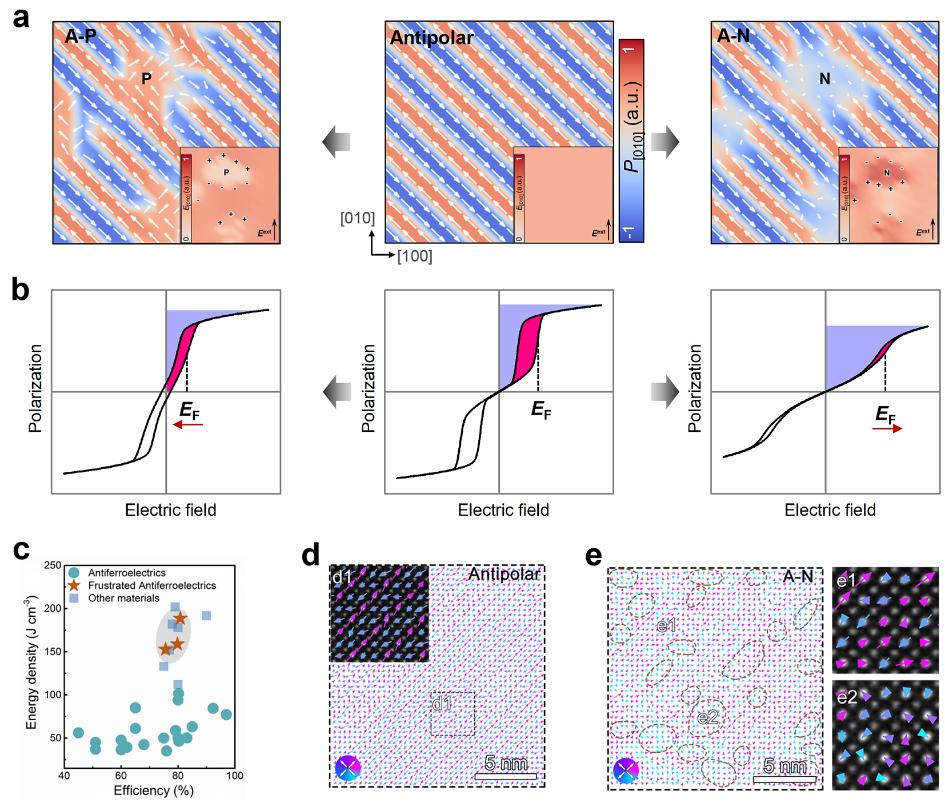
A recent collaborative study, published in Nature, introduces an innovative approach to improving energy storage in antiferroelectric materials. The research team, including researchers from the Hefei Institutes of Physical Science of the Chinese Academy of Sciences, Tsinghua University, Songshan Lake Materials Laboratory, and the University of Wollongong, has proposed antipolar frustration strategy to enhance the performance of dielectric capacitors, which are crucial for high-power devices requiring fast charge and discharge rates.
"We messed with the polarization in antiferroelectric materials, making them more efficient and powerful," said Prof. YANG Bingbing, a member of the team.
Antiferroelectrics, known for their antiparallel polarization configuration, are potential candidates for energy storage due to their phase transition from antiferroelectric to ferroelectric under an electric field. This transition provides high polarization strength and near-zero remanent polarization, making them ideal for energy storage. However, challenges such as low phase transition electric fields and high energy loss during the transition have hindered their performance.
To overcome these limitations, the researchers introduced this new approach—antipolar frustration. By adding either non-polar or polar end-member components to antiferroelectrics, they successfully adjusted the phase transition electric field and reduced energy loss. Their theoretical analysis revealed that the resulting local frustration induces polarization discontinuity, creating an electric field at the interface that influences the phase transition behavior. For non-polar end-member antiferroelectrics, the built-in electric field reduces the electric field strength needed for phase transition, and upon removal of the field, the material quickly returns to its antiferroelectric state, lowering energy loss.
The experimental results, based on lead zirconate, confirmed the theoretical predictions. By introducing non-polar phases, the material's long-range antipolar order was disrupted, forming a coexisting structure of antipolar and non-polar regions. This led to a significant improvement in energy storage density, achieving 189 J/cm³ with an efficiency of 81%.
This study provides new ideas for dielectric energy storage materials and a novel theoretical strategy for polarization configuration design.

Antipolar frustration design and energy storage performance in Antiferroelectrics. (Image by YANG Bingbing)